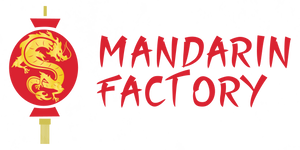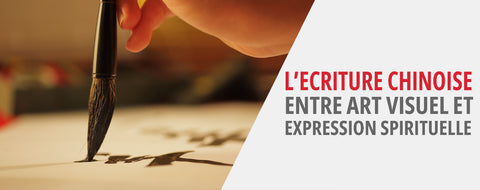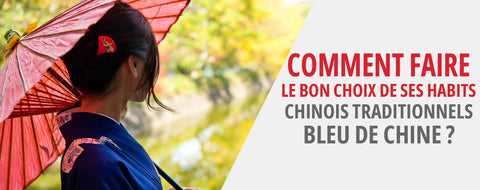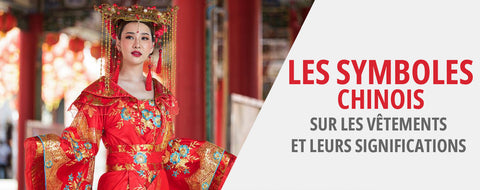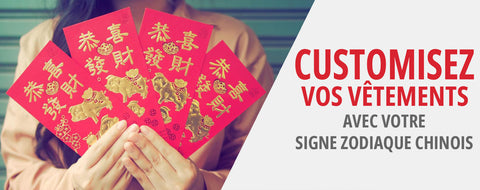
Traditional Chinese Wedding
reading - words
During China's two millennia of Imperial history, it was customary to say that the three happiest moments in one's life were the imperial examination, determining who could enter the upper echelons of the Empire, the marriage, and the birth of a child. From the Qin Dynasty (221 BC - 206 BC) to the Qing Dynasty (1644 - 1911), the feudal system was in force. Throughout these two millennia, getting married was much more important than finding one's soul mate. From the husband's point of view, marriage determined the prosperity and even the reputation of the family. The bride, for her part, often lost the bond that united her with her parents, who would hardly see her again once married. This is why choosing the ideal partner was vital, both for the spouses and for the future of the family. Rich wedding traditions have thus been passed down from generation to generation, evolving over time, some of which are still in use today.
Chinese Marriage in Ancient China
In feudal society, marriage was not the idea of a young couple in love, but that of their parents. Marriage could only be considered when the parents had agreed on the terms and that each person's desires matched each other. These conditions included discussions about money and the social status of the families. If the man's family was wealthy or of high social status, his parents would not allow him to marry a woman from a poor family under any circumstances. In these agreements, we recognize the famous "Three Letters and Six Labels."

Three letters and six labels
The first of the famous three letters, the request letter, was a letter from the girl's family, announcing an official marriage proposal to the young man's family. Then, the second, the letter of presents, or gift letter, accompanied the gifts offered by the groom's family. Finally, a third letter, the wedding letter, came to seal the union on the wedding day.
This ritual was accompanied by the six labels, namely the stages of the procedure leading to marriage:
- The marriage proposal: When the man's parents intended to arrange a meeting, they would invite a matchmaker to perform the marriage proposal at the girl's family's home. If the proposal was accepted, the matchmaker, who was usually a matchmaker, would be thanked with many gifts and dishes from the grateful family. In many cases, the bride and groom could not see each other until the day of the ceremony.
- Birthday verification: The young man's family then had to know the girl's full name and date of birth, so as to ask a fortune teller if this predicted a happy future for the future spouses, and if the two zodiac signs corresponded.
- Engagement gifts: If good fortune was promising, the boy's family would announce to the other family that the process was continuing by sending them gifts.
- Wedding gifts: The most important, but also the most expensive, step of the marriage proposal is when the husband's family presents wedding gifts to the girl's family. The gifts are carefully chosen and are as lavish, expensive, and luxurious as the family's social status allows.
- Wedding date selection: The wedding date was not chosen by the families, and was not the result of chance. Rather, the fortune teller was asked which date would be the most promising for the future of the couple. The date was chosen according to astrology books.
- The wedding ceremony: The wedding ceremony began with the two families, and the two fiancés, meeting at the young woman's home. Before the wedding, the dowry of the groom's family was paid to the other family. The dowries, which corresponded to the social status of the woman's family, included gifts such as scissors representing two inseparable butterflies, a ruler that symbolized the family's territory, and vases representing peace and wealth, which were wished for the couple.

Traditional Chinese Wedding Ceremony
Before the ceremony, custom dictated that an old woman would tie the bride's hair in a bun with colored cotton ties. The bride would dress in a red dress, custom wanted, and still wants, that red is a lucky color. Generally, when the groom and his family arrived, the young woman and her parents cried to show their sadness at parting. Then, her oldest brother had to accompany her, sometimes even carry her, to the sedan chair that took her to the place of the ceremony, where the union was celebrated with music and fireworks. The bride then crossed a red carpet in a festive atmosphere. The groom, also dressed in a red tunic, would then make three bows: the first to thank the heavens, the second to thank the parents, and the last to thank the bride. Then, the young brides went directly to their bridal chamber while the guests enjoyed a banquet. Tradition dictated that wine should be served to the brim but not spilled. In some regions, guests were encouraged, during the night of the reception, to joke about the newlyweds, in order to break the ice and facilitate the meeting.. On the third day after the wedding, the newlyweds were to go to the bride's family to share a dinner with guests. Discover a traditional chinese wedding.

Modern Chinese Wedding
In modern China, profoundly changed by the opening up of the People's Republic of China, marriage procedures and ceremonies are very different from what they were in the past. Arranged marriages, although still existing, are less common, and social status is no longer at the center of marriages. Also, marriage ceremonies are no longer marked by religion, but many traditions still persist and are still used today. As early as 1980, a major reform allowed individuals to choose their partner. Today, according to the law, a man must be at least 22 years old to marry, and a woman 20 years old. Marriages arranged by parents are less systematic but still exist in China. Finally, for the time being, the law does not allow marriage between two people of the same sex, but since 1984, homosexuality is no longer considered a crime, although it is still strongly discriminated against.
Modern Chinese Wedding Ceremony
Modern Chinese wedding ceremonies are often devoid of religious meaning, and young lovers often exchange rings at the town hall. Indeed, many couples opt for a civil marriage and therefore a secular ceremony. Then, as in the West, the guests are invited to a reception at which a banquet will be held, usually financed by the husband's family. Religious families sometimes opt for a religious ceremony, which will also end with an opulent banquet. In all cases, the banquet and wedding reception are the most important moment of the ceremony. The guests sign a guest book and offer the young couple red envelopes containing money that the young couple will count in front of the offerers. What would be considered impolite in the West is customary in China, and the newlyweds keep a tally of the money offered by each guest. This will be useful to them later, when the couple goes to the ceremony of said guests. They will then have to offer them more than they have received.

Chinese Wedding Banquet
The banquet is a lavish event that lasts at least two hours. After the couple is given the red envelope, the guests are led to the banquet. Some ceremonies have a seating plan, others let the guests sit wherever they want. But almost all couples choose a master of ceremonies to host the festivities. This announces the entrance of the newlywed couple, which will mark the beginning of the banquet.
Then one of the newlyweds, usually the man, officially welcomes his guests with a welcome speech. The guests are then served the first of their nine courses. Throughout the ceremony, the couple walks back and forth in the reception hall, changing outfits several times. While the guests enjoy their meal, the newlyweds are usually too busy changing and tending to the needs of their guests. They usually do not take the time to eat until the sixth course. During the ceremony, it is customary to toast several times. The couple makes a first toast, often followed by the groom's best friend. The couple then wanders between the tables to toast individually with the guests. They then slip away as dessert is served.

Dessert marks the end of the celebrations. After tasting it, the guests line up to announce their congratulations and wishes of happiness one by one to the young couple and their families outside the reception venue. Everyone takes a photo with the couple, and the young bride sometimes offers them sweets. Some couples prefer to opt for a buffet although this is less common.
Traditional Chinese Wedding Dress
Far from Western customs, Chinese culture places great emphasis on luck and good fortune for its traditional wedding attire. Generally speaking, dragons, phoenixes, red and gold are elements that bring good luck, and are thus essential to Chinese wedding attire.
So, the red is the main and most traditional color for Chinese wedding clothes. Red, a color very dear to the Chinese, is supposed to bring happiness, longevity and wealth. It is even believed that red keeps away bad luck and evil spirits. Far from Western ceremonies where black and white dominate, the traditional wedding dress also depends on the regions.
In the northern regions of China, a Qipao dress (旗袍), also called Cheongsams, is generally preferred. The Qipao is a prominent dress, tight at the waist, which sports a Mao collar that is most often straight. This dress, often slit on the sides, is most often red and embroidered with gold and silver details. In the southern regions, on the other hand, brides will prefer to wear a Longfeng Gua, a two-piece dress. These dresses are very often adorned with a golden phoenix. The ultimate symbol of femininity, happiness and union, the phoenix, called Fenghuang in Chinese, represents the Empress, and is thus opposed to the dragon, symbol of the Emperor. We also often find five bats on the Longfeng Gua, representing five good news that will come to the couple.

In the most traditional weddings, the bride wears a veil. This veil is a square of red silk, on which peonies or a phoenix are often embroidered. It is said that the veil would ward off bad luck and allow the young woman to hide the fact that she blushes. Traditionally, she keeps the opaque veil, which covers her completely up to her shoulders, during the entire ceremony. The husband only removes it when all the guests have left the ceremony room.
Brides who opt for a traditional wedding also sometimes wear a phoenix tiara (凤冠), which was considered a great honor in ancient weddings. These crowns have been around since the Ming Dynasty.
Adorned from head to toe, young women also carefully choose their wedding shoes. In the southern province of Fujian, it is customary to wear shoes embroidered with patterns of turtles or a deer, which symbolize the longevity of the union. In Zhejiang province, the bride will wear shoes called Shang Jiao Xie, which are small flat shoes made of red silk. These shoes, often used to ride in the sedan chair, must be made by the bride or her family.
However, nowadays, couples often opt for Western wedding attire, and the bride will wear a long white dress, while the groom will choose a black suit. Some of these couples still wear traditional Chinese wedding attire for wedding photos, or simply for the duration of the ceremony or banquet.
Chinese Wedding Decoration
Chinese wedding hall decoration
Red is a color that brings luck, good fortune, and happiness in Chinese culture. Chinese wedding decoration is therefore essentially red, as is the bride's dress. Also found in all Chinese weddings is the symbol of double happiness (囍), which reads “ shuangxǐ ". This symbol consists of two characters "喜", which in Mandarin means happiness. This symbol of double happiness represents the happiness of union, love, and brings good fortune to the couple. In Chinese weddings, it is also customary to decorate the wedding hall with dragons and phoenixes, which, when together, are a symbol of the power of happy union.

Of the red lanterns are also hung in the room (discover their history and their meaning), and especially outside, around the front door, to bring luck to what happens inside. These lanterns, usually made of paper, are decorated with different symbols, including the symbol of double happiness.
Chinese wedding table decoration
The table at a Chinese wedding is usually decorated with a red tablecloth and gold decorations, as is the rest of the room where the banquet is held. Chinese couples often opt for ribbons, centerpieces, bouquets, or dolls representing the wedding couple.
Chinese wedding flowers
During Chinese wedding ceremonies, flowers are mainly used as table decorations to celebrate their union. Large bouquets of colorful flowers are also offered to the young couple, most often roses And red. Often elaborate bouquets of flowers are lined up to form a path up to the grand reception hall. Some brides choose to hold a small bouquet, but usually only keep it for wedding photos.

THE Lily is a very common flower in Chinese weddings, because the word "lily", in Chinese, means " bǎi he » (百合) resembles the words of a Chinese proverb announcing a happy marriage for a hundred years. Chinese tradition also has it that these flowers announce the birth of a boy.
THE orchids are also very popular as wedding ceremony flowers. They represent the love of a married couple, but also wealth.
Finally, the lotus is also very common at Chinese weddings. A lotus flower with a leaf and bud traditionally represents a happy union.

